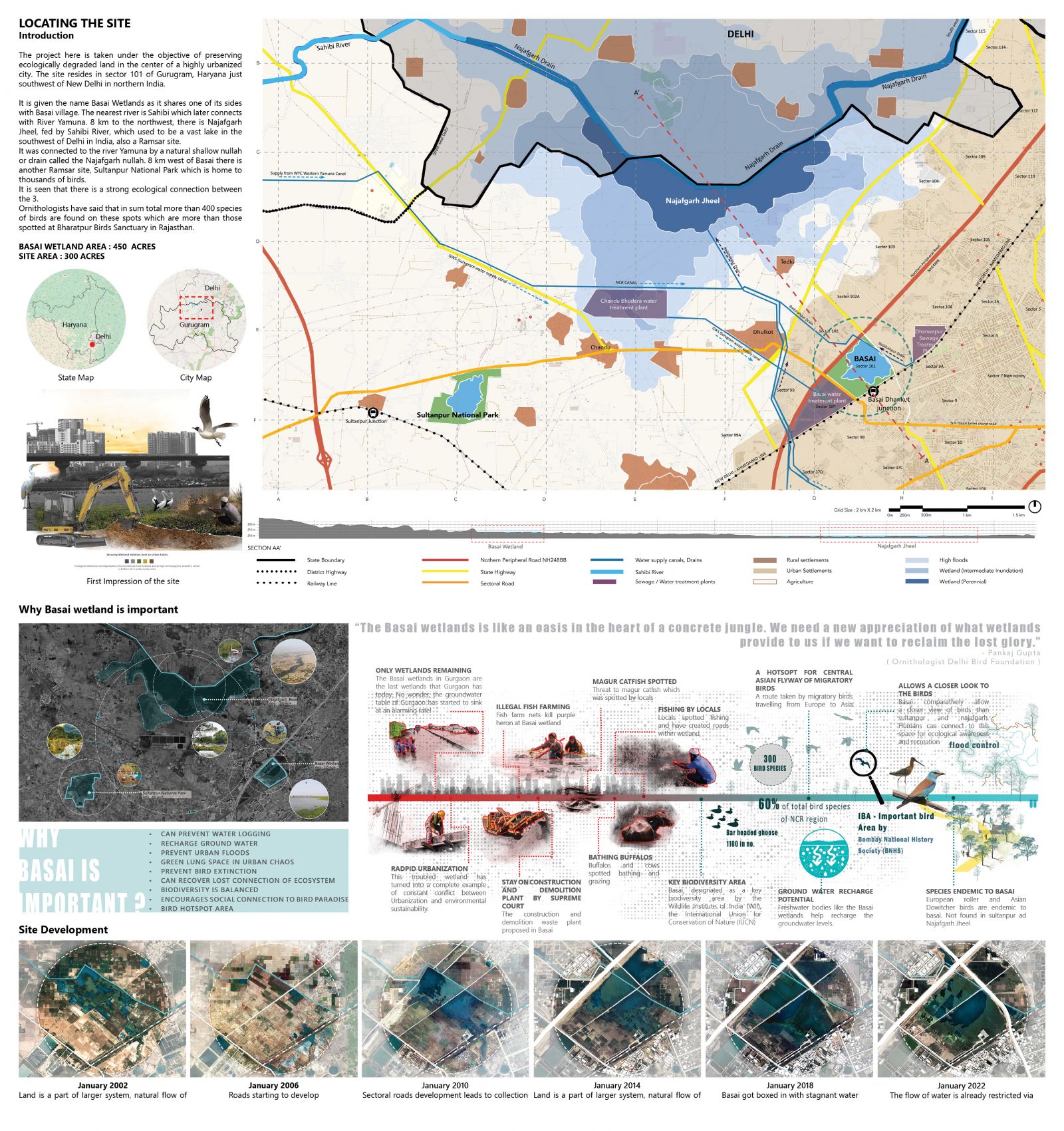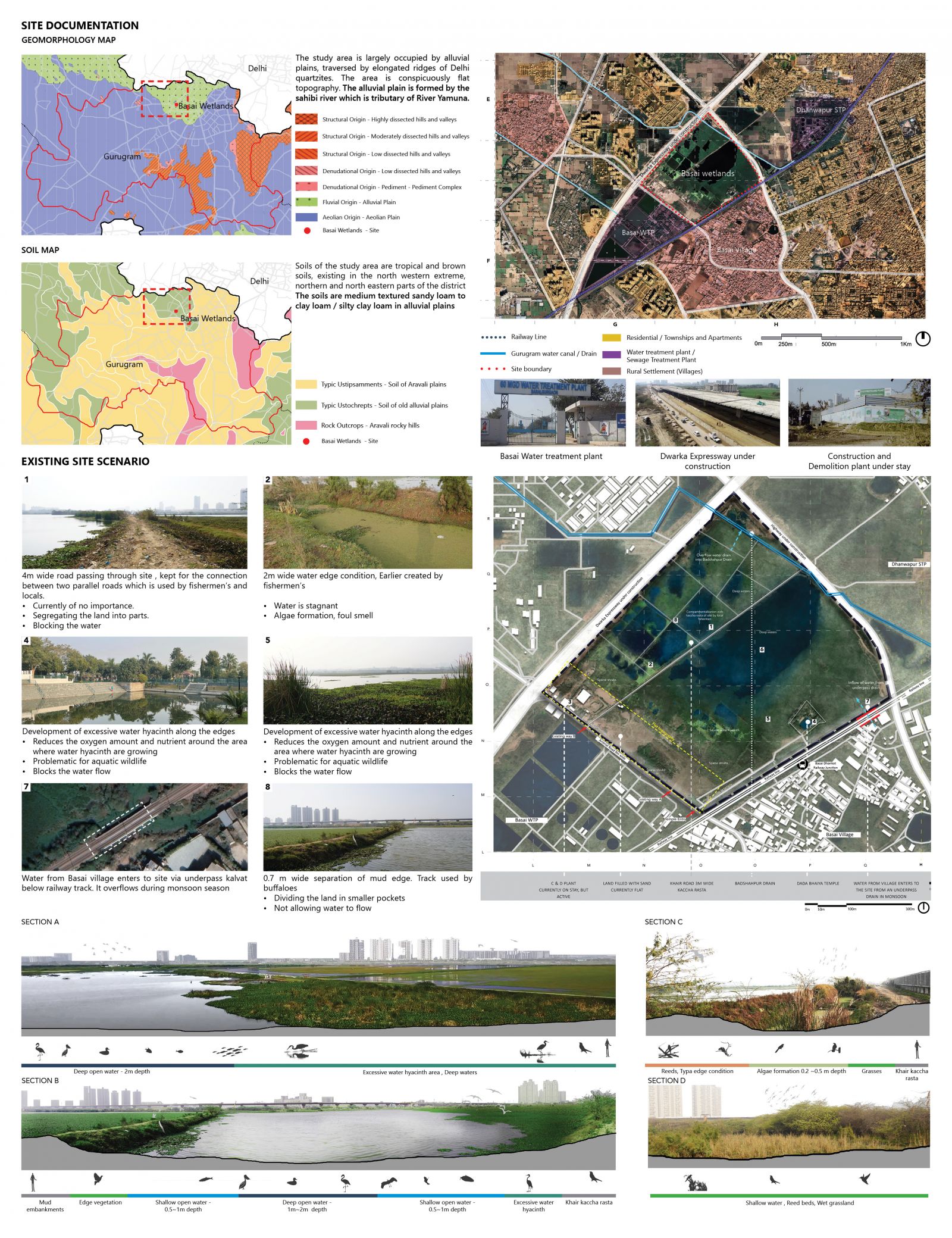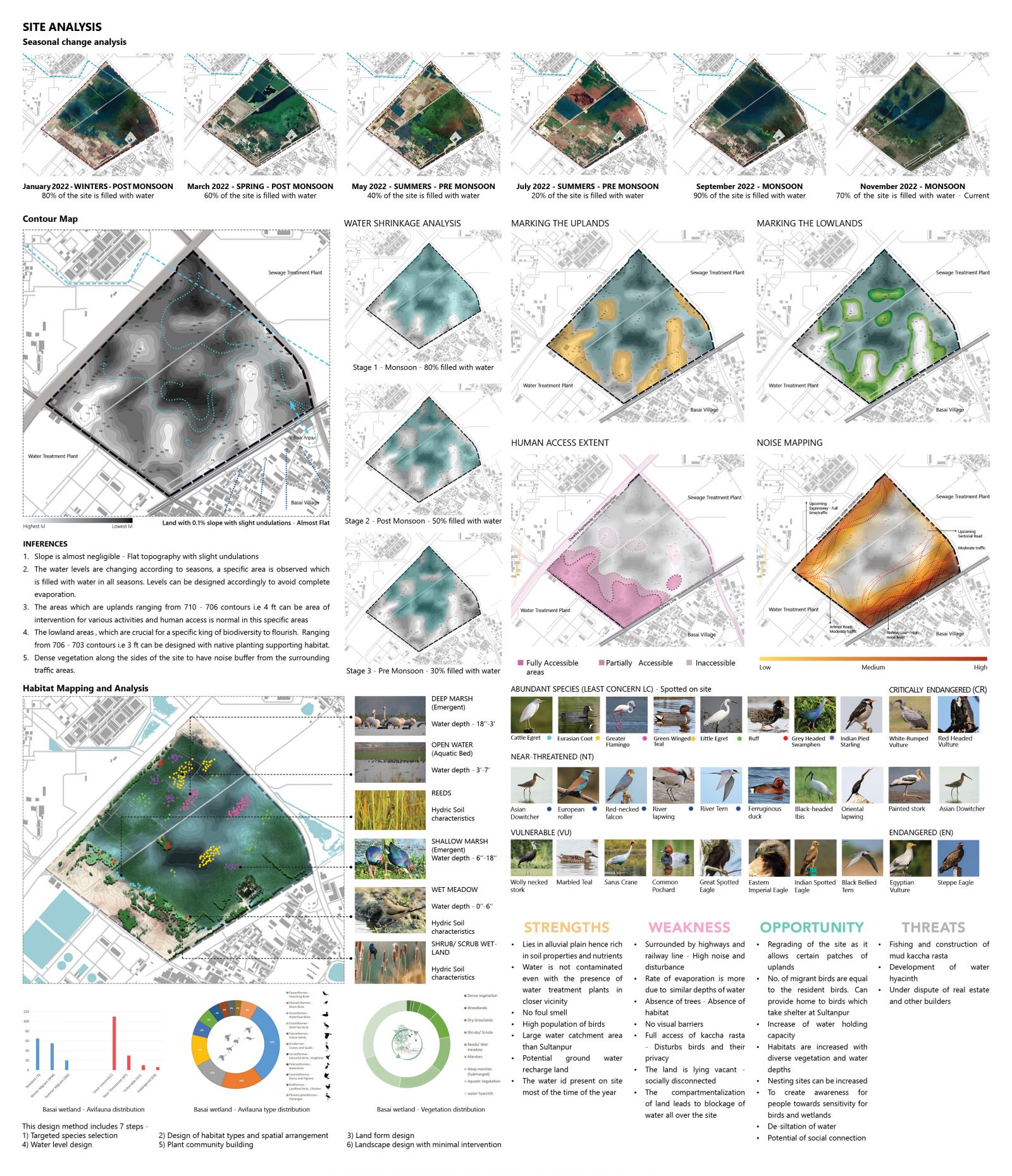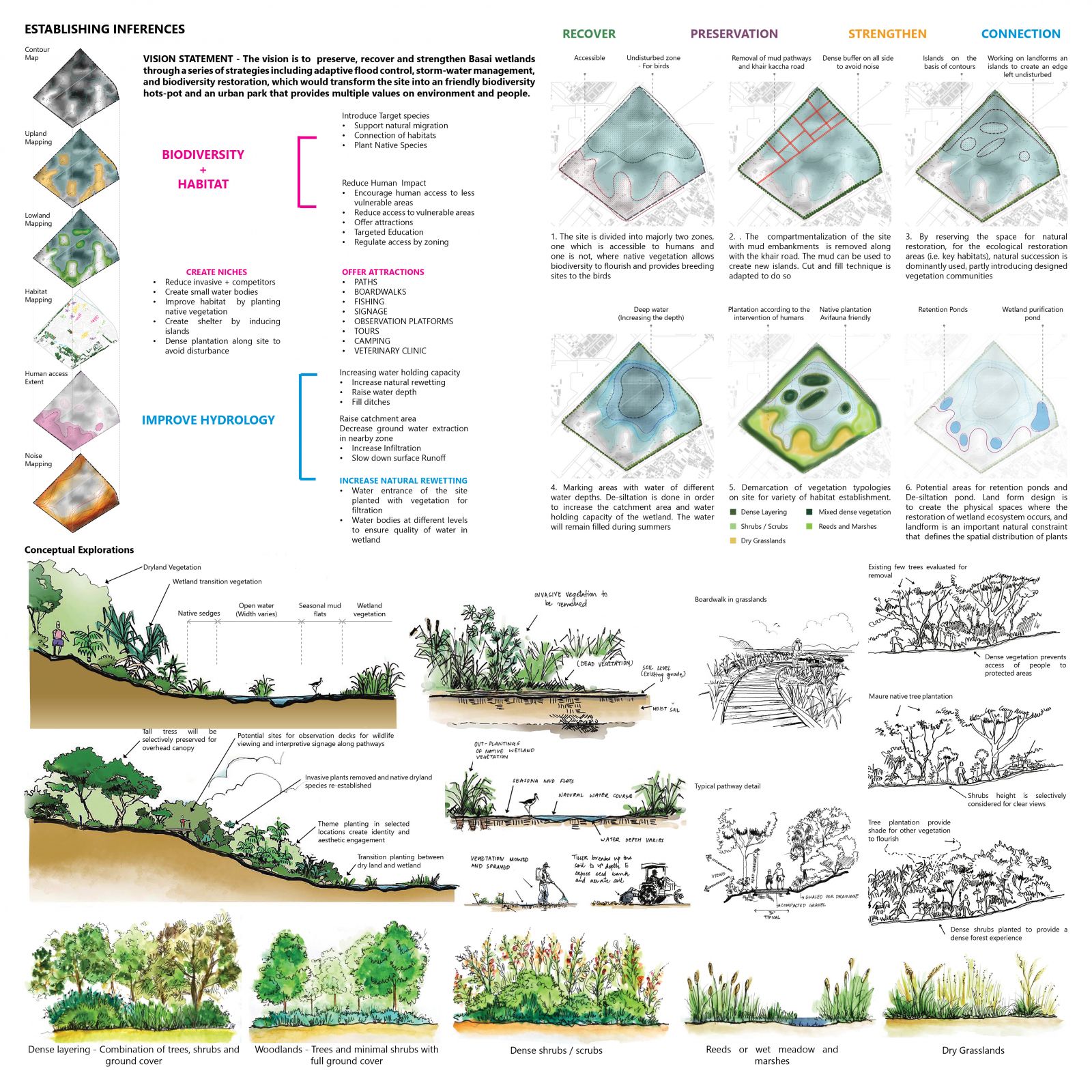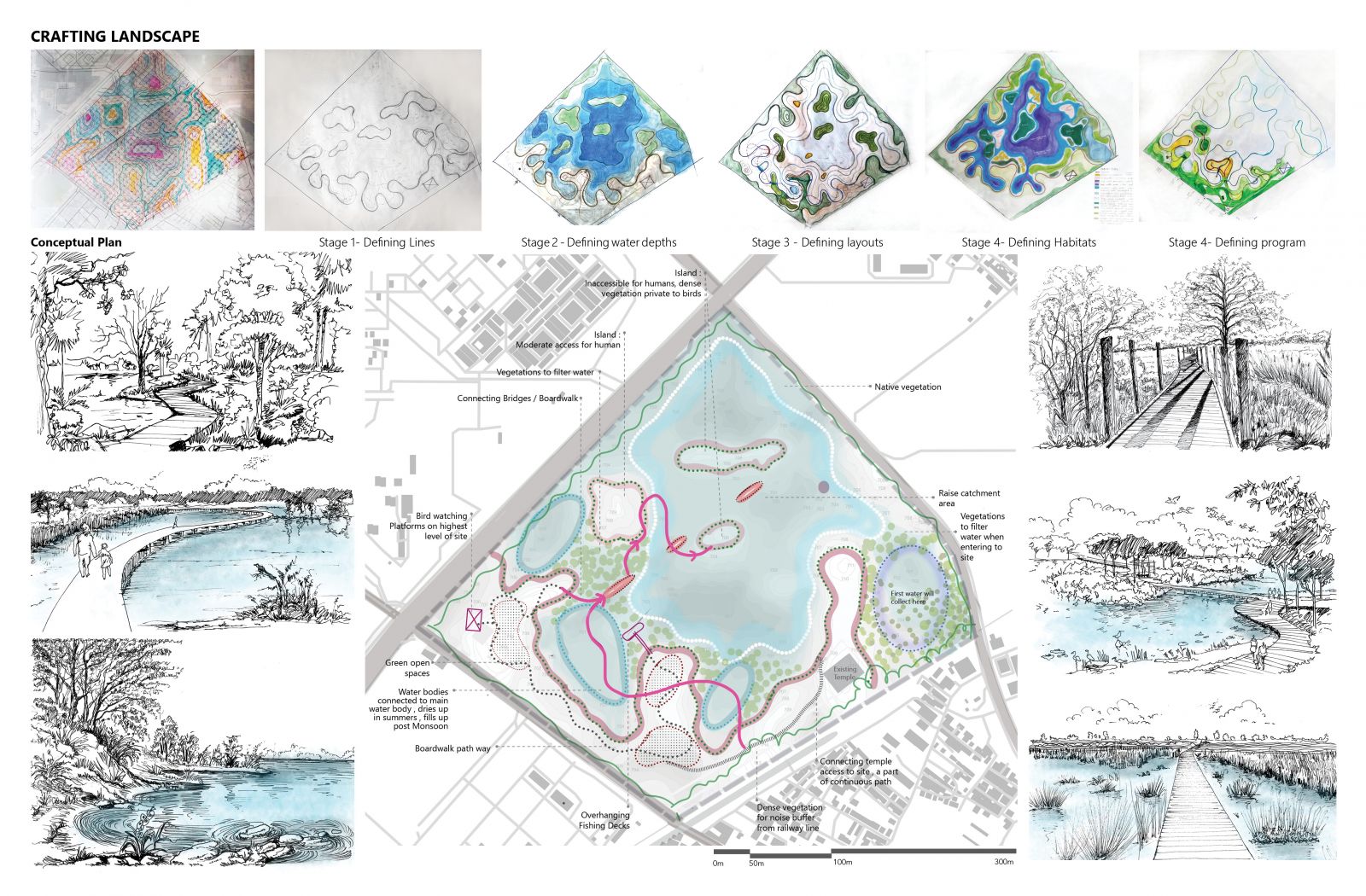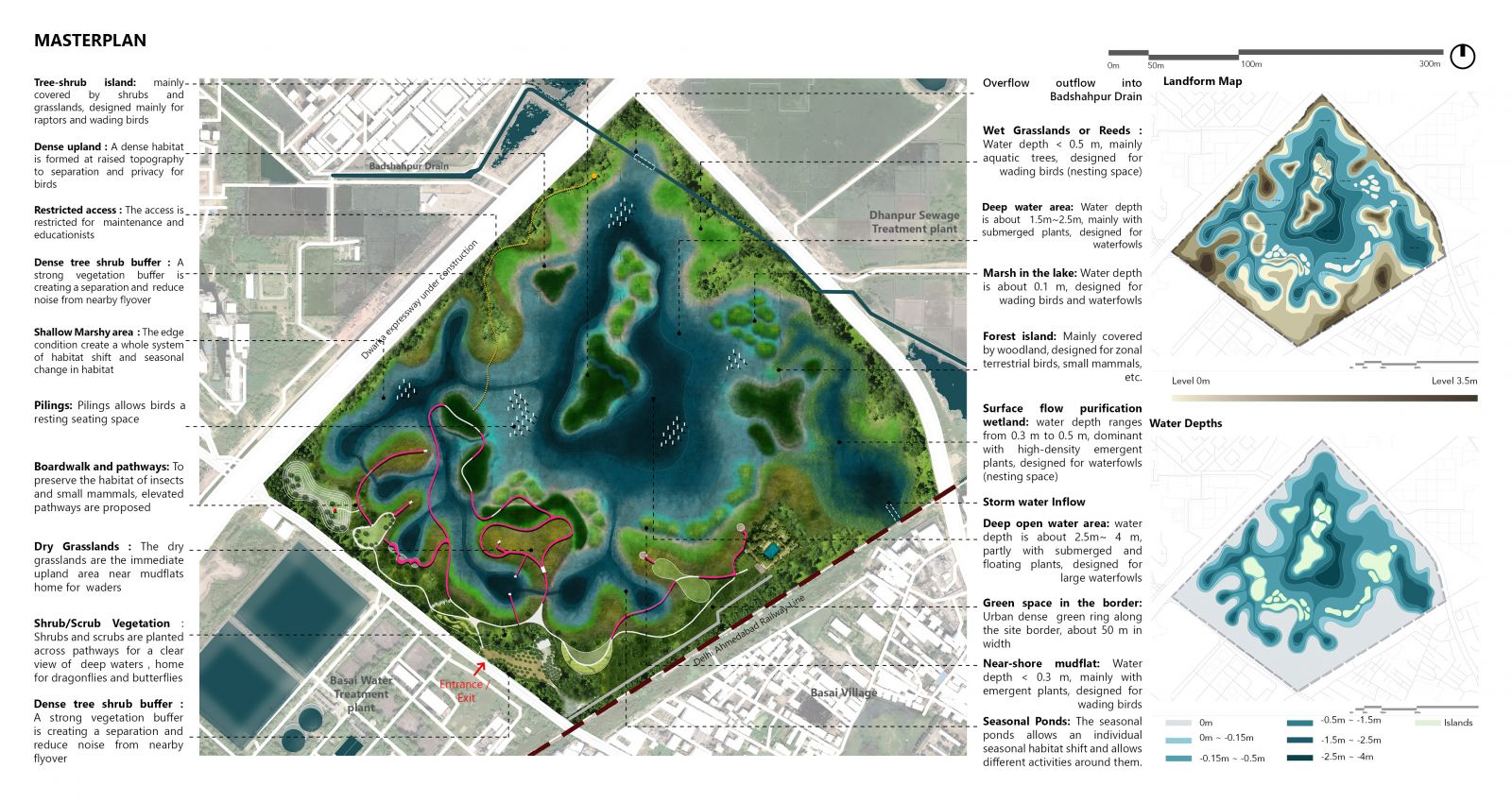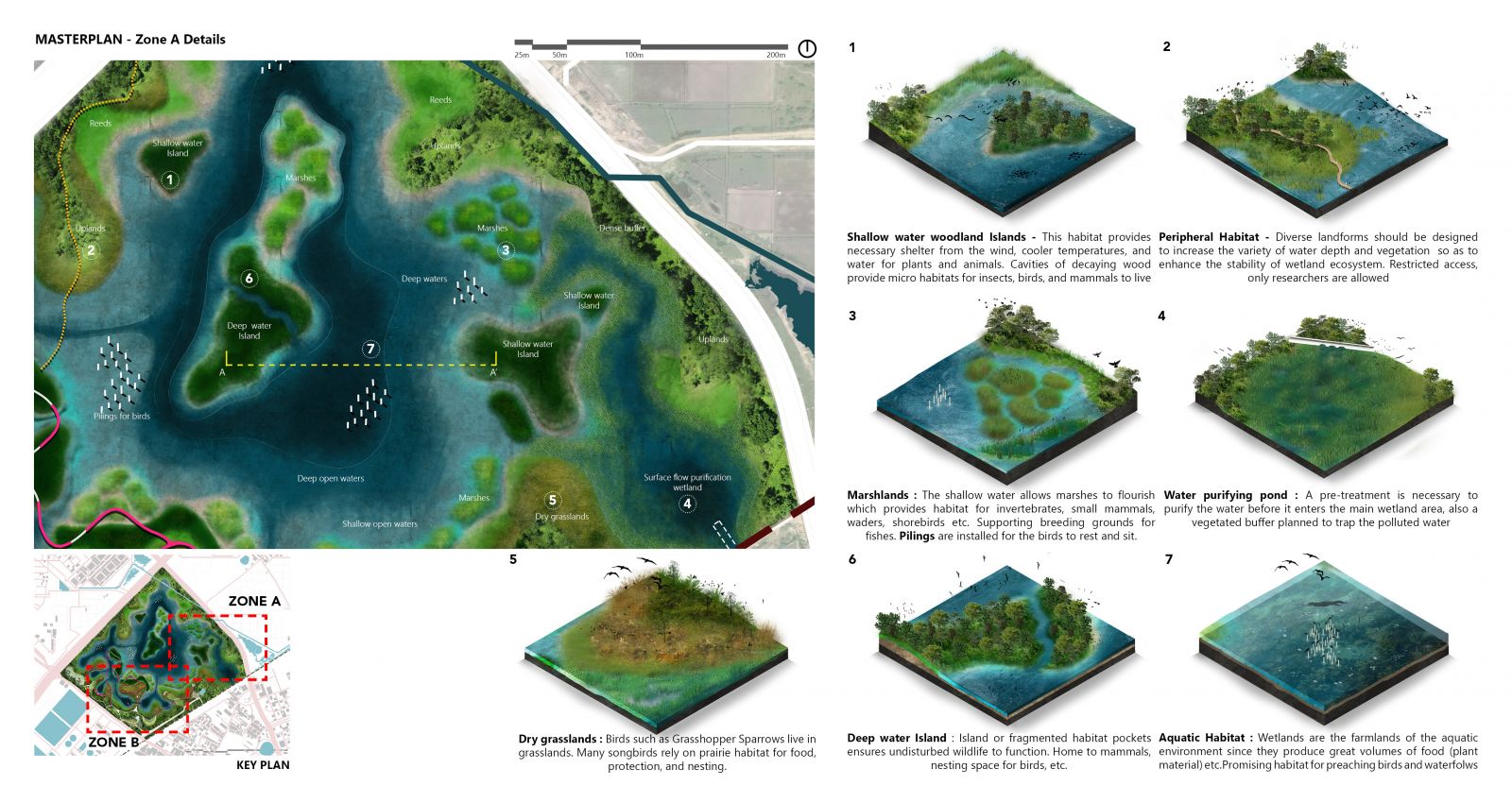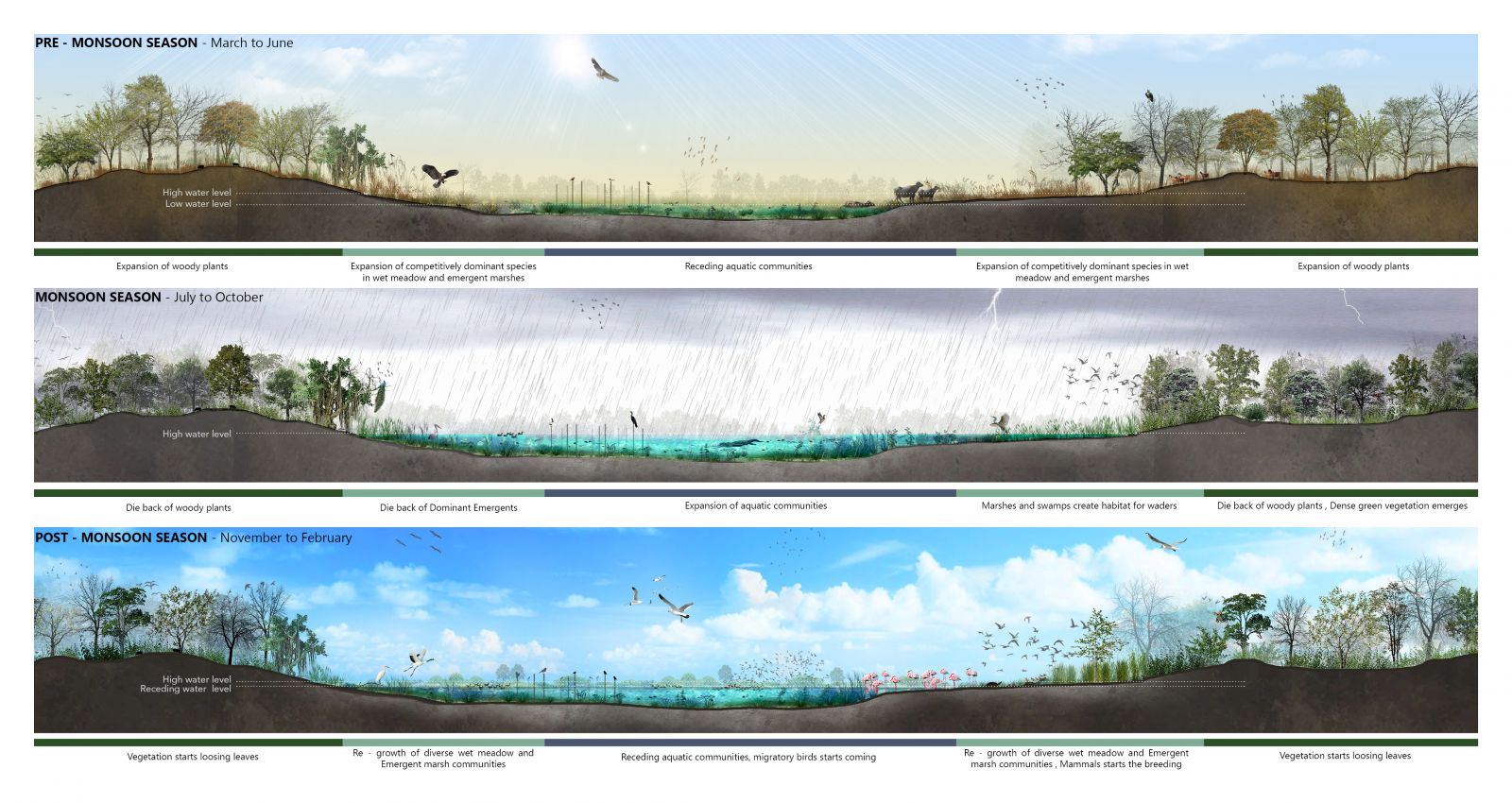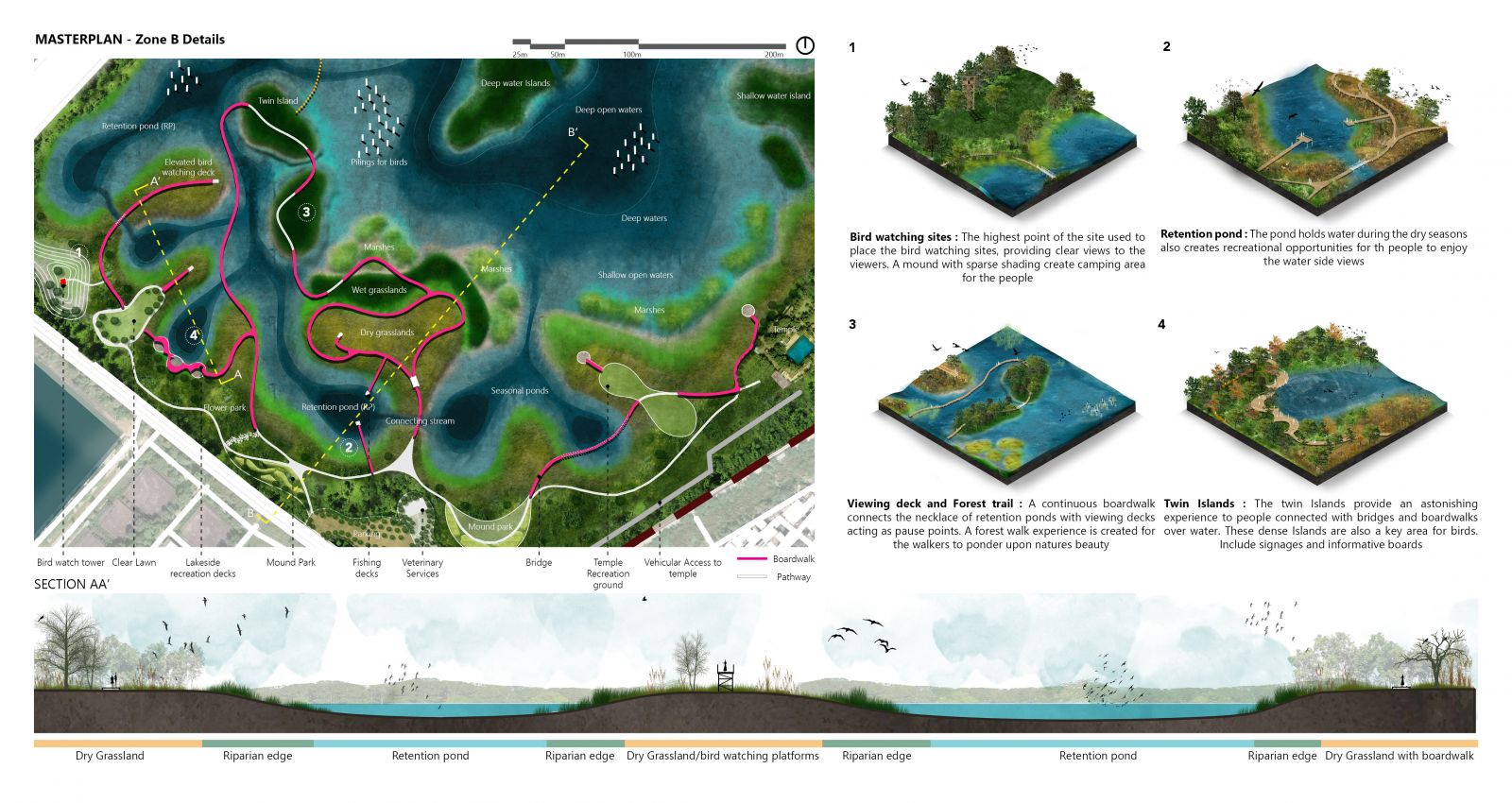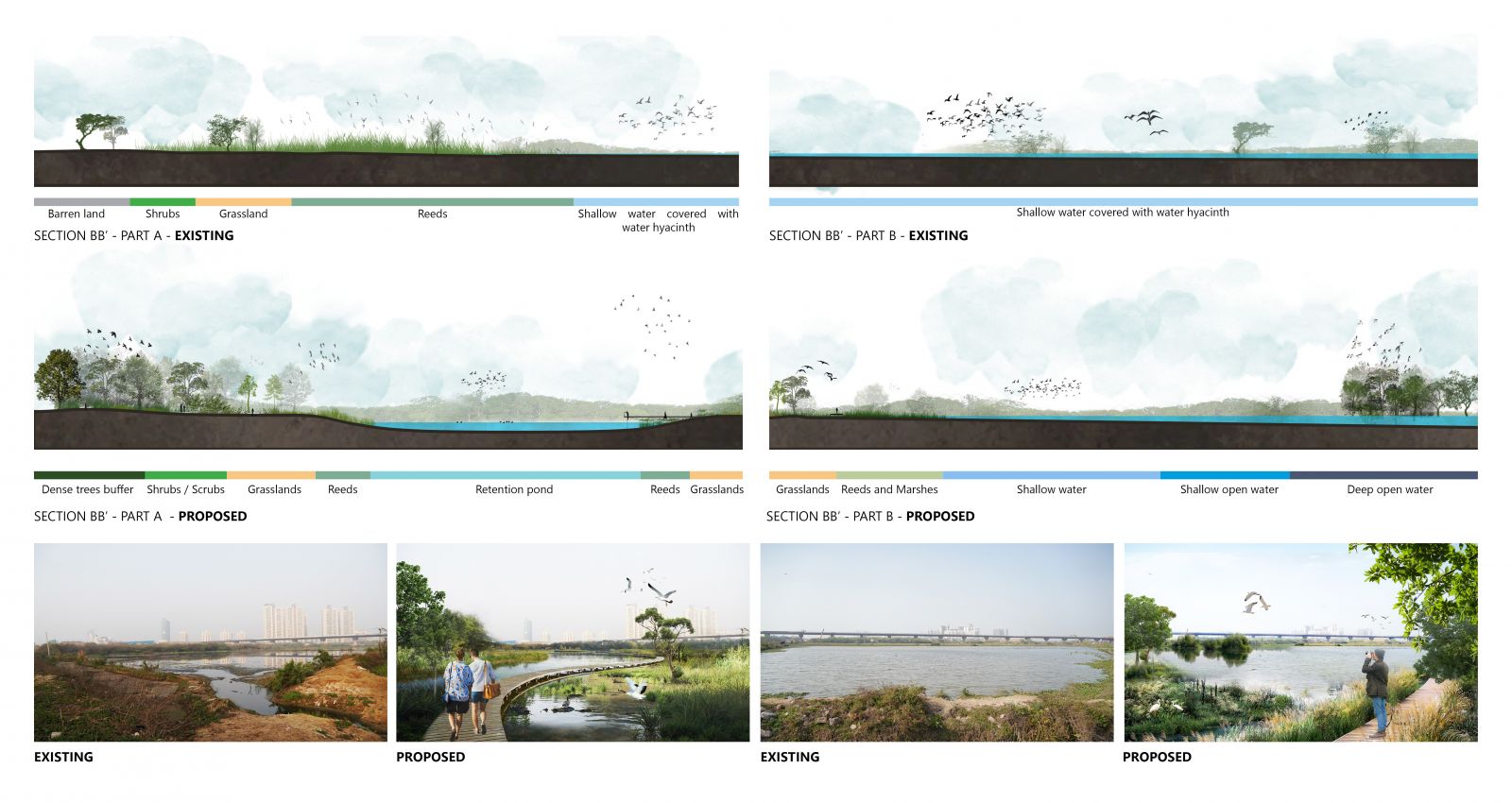- Student NIVEA GUPTA
- Code PLA22231
- Faculty Architecture
- Unit L4 Studio Unit
- Tutor/s Deepa Maheshwari
- TA Anmol Tewari
The term urbanization, which we all are well aware of but unaware of the threats and results of it which will cause severe damage to our ecological systems. We often come across some huge chunk of land in our cities and think it is just lying vacant and of no use but in reality, it is ecologically degraded in some or the other way. The project here is taken under the objective of restoring ecologically degraded land in the center of a highly urbanized city. The site is known to be Basai wetlands which resides in sector 101 of Gurugram, Haryana just southwest of New Delhi in northern India. It is given the name Basai Wetlands as it shares one of its sides with Basai village. The land covers an area of 300 acres. 8 km west of Basai there is another Ramsar site, Sultanpur National Park which is home to thousands of birds. It is seen that there is a strong ecological connection between the 3. Ornithologists have said that in sum total more than 400 species of birds are found on these spots which are more than those spotted at Bharatpur Birds Sanctuary in Rajasthan. Basai is currently a marshy land filled with water surrounded by highways, sectoral roads, townships, and a village. Basai wetland prevents flooding and recharges groundwater of severely water-scarce Gurugram area. Basai is now known as the ‘Paradise of Birds’ by ornithologists and ecologists. It is recognized as an Important Bird Area (IBA) an ‘Key Biodiversity Area’ by the Bombay Natural History Society. The vision is to preserve, recover and strengthen Basai wetlands through a series of strategies including adaptive flood control, storm-water management, and biodiversity restoration, which would transform the site into a friendly biodiversity hotspot and an urban park that provides multiple values on the environment and people. The strategy is to transform the dying wetland into an urban wetland park, providing multiple ecosystem services for the existing community. Creating a necklace of ponds and uplands surrounding the former wetland. While leaving a major wetland core untouched and undisturbed for birds and for natural evolution and transformation.
